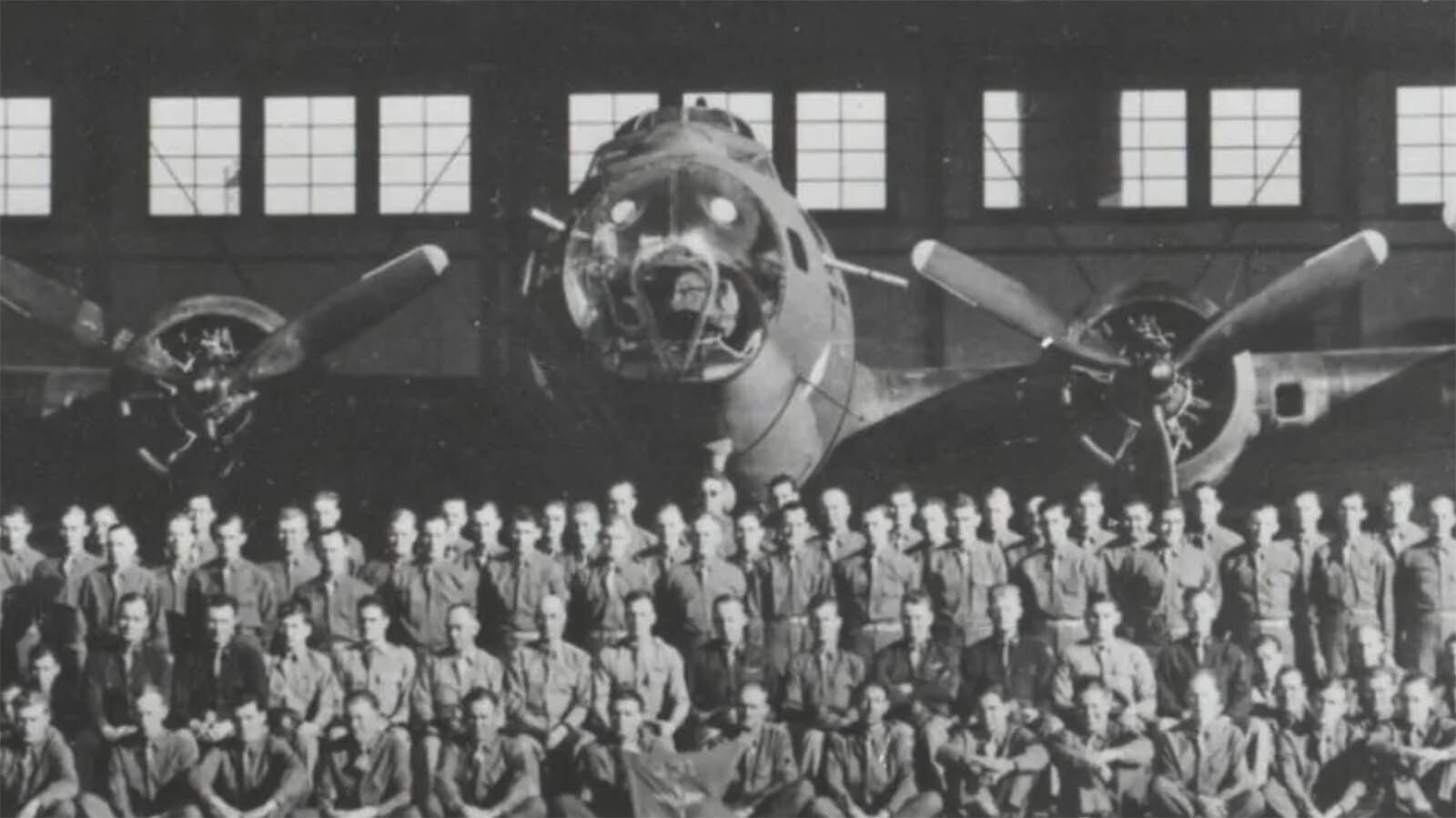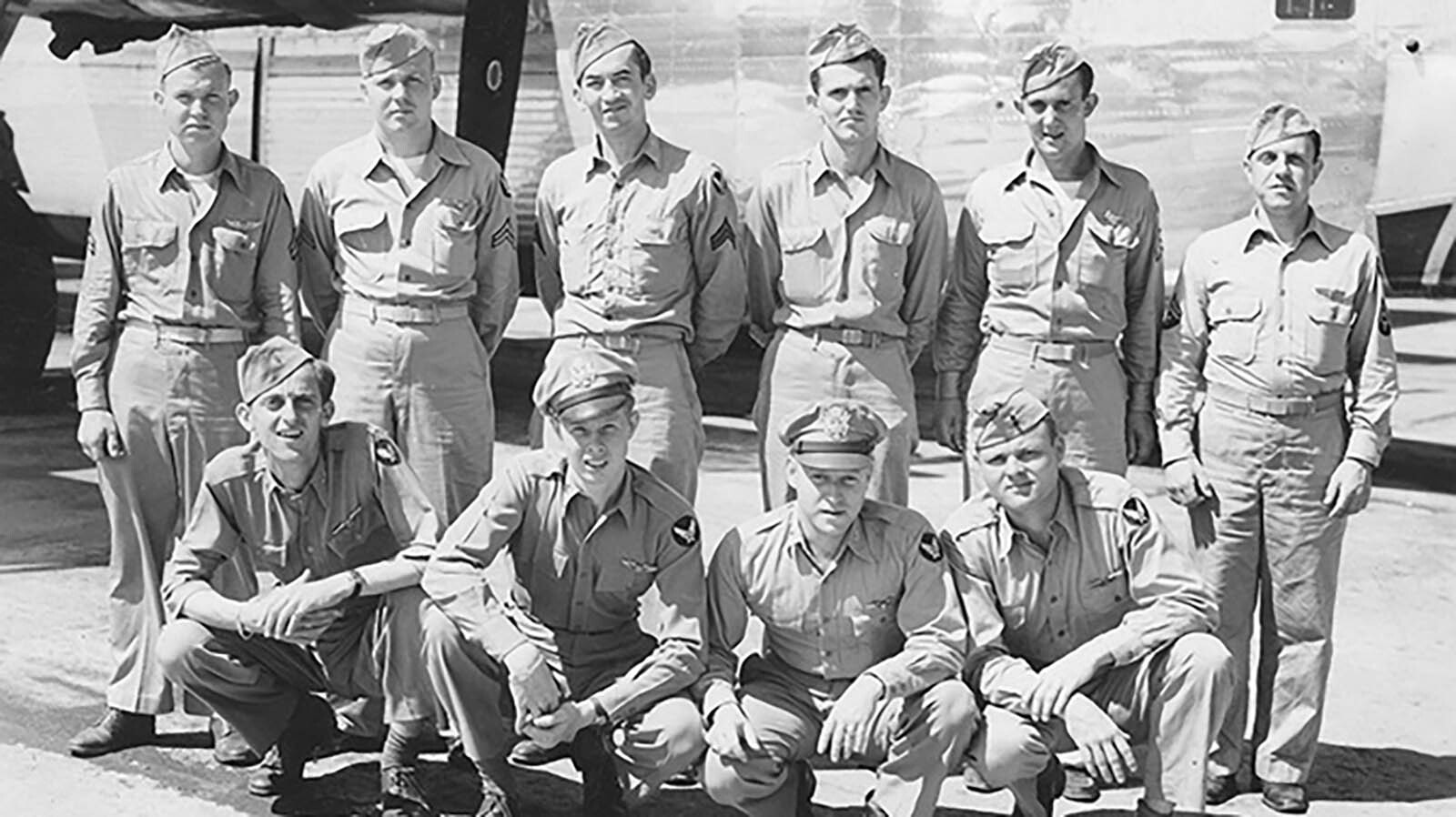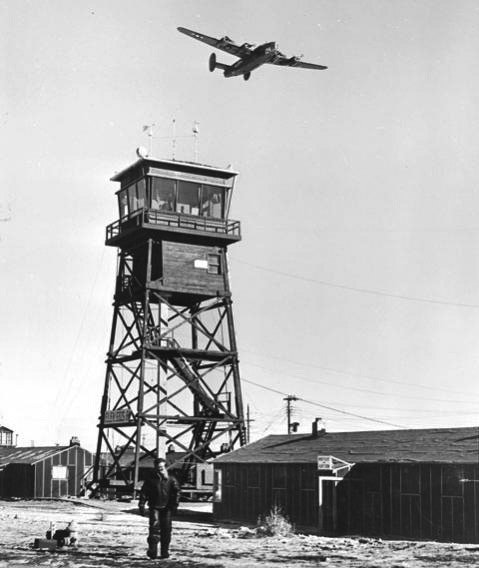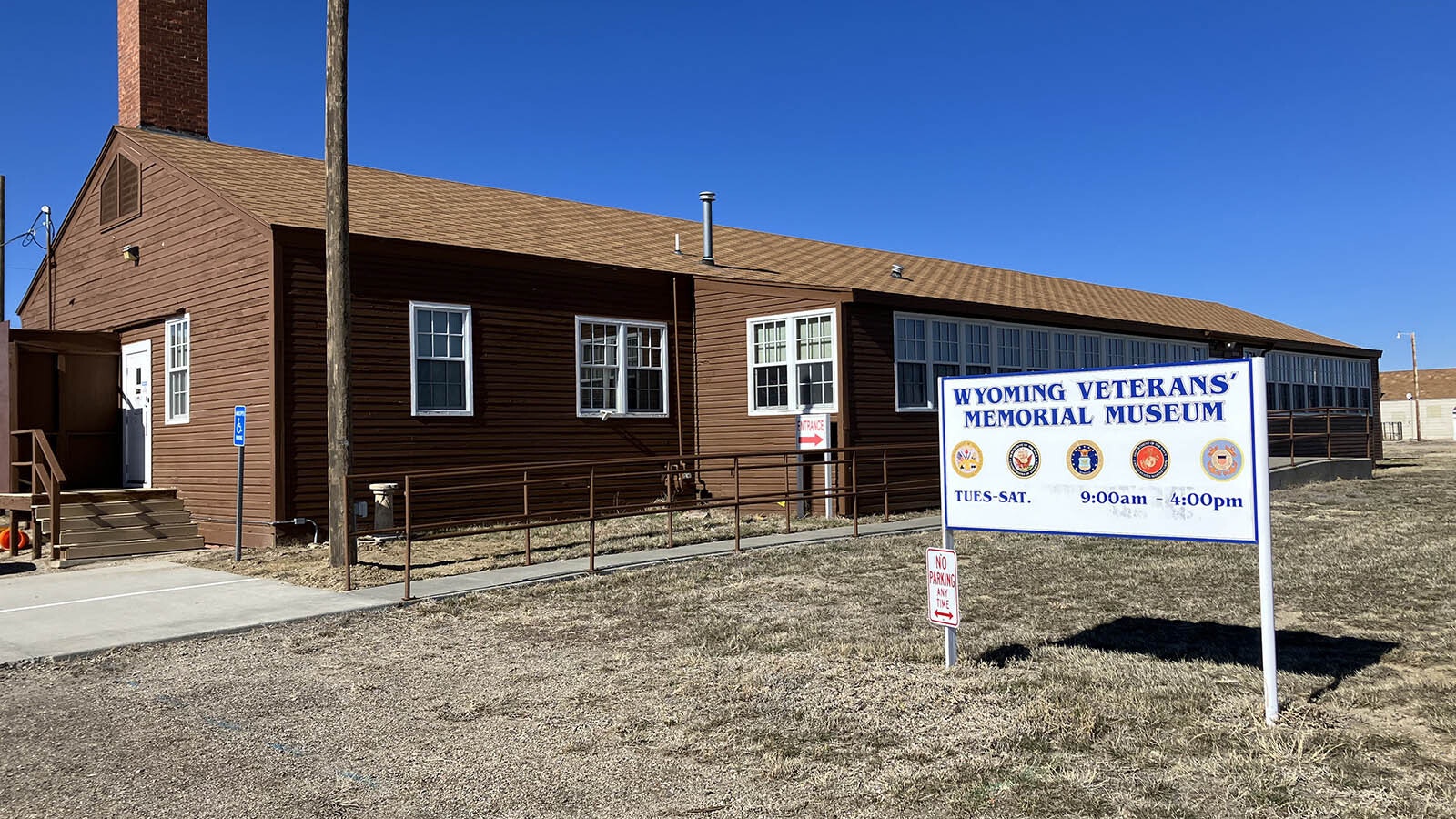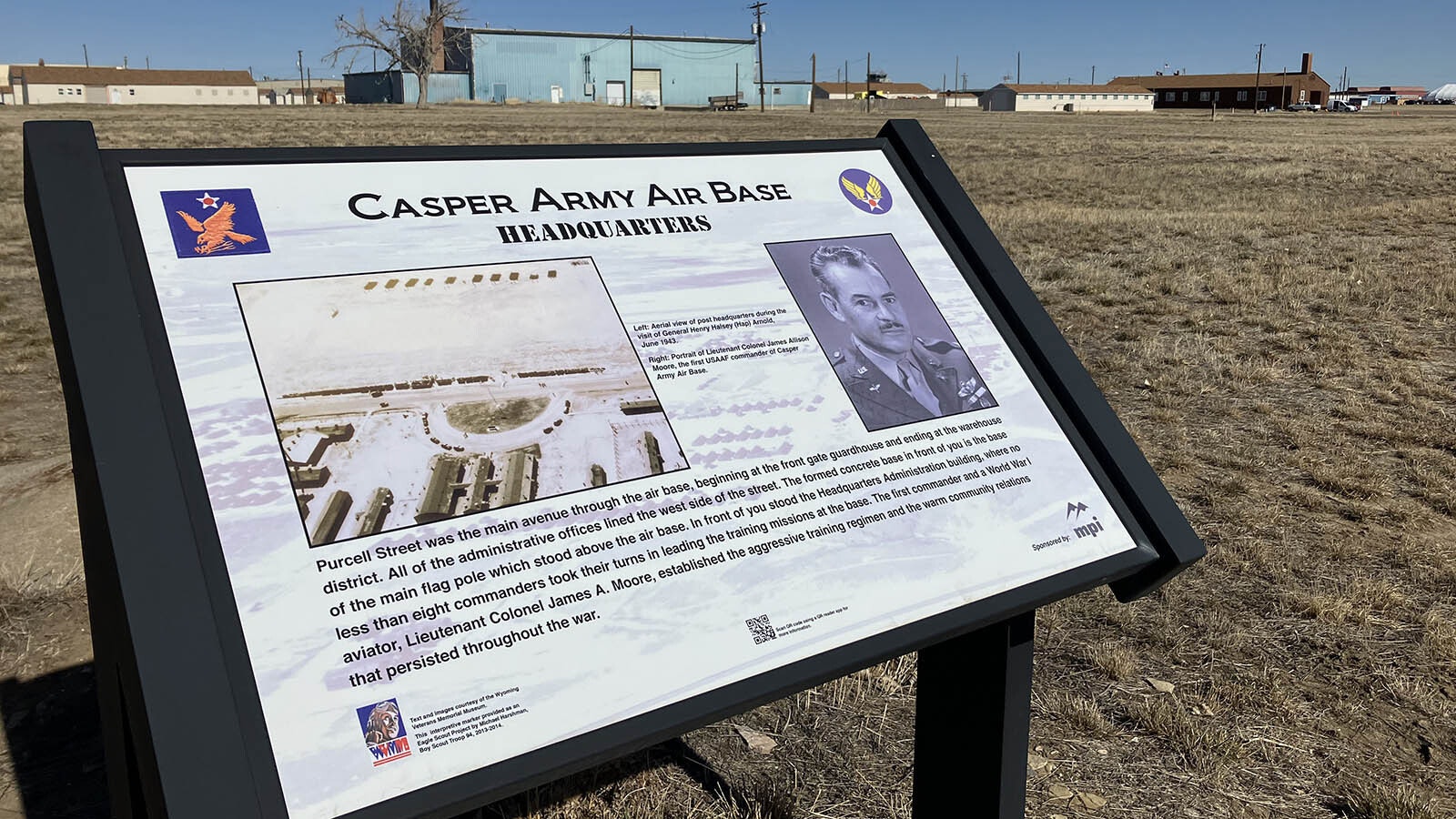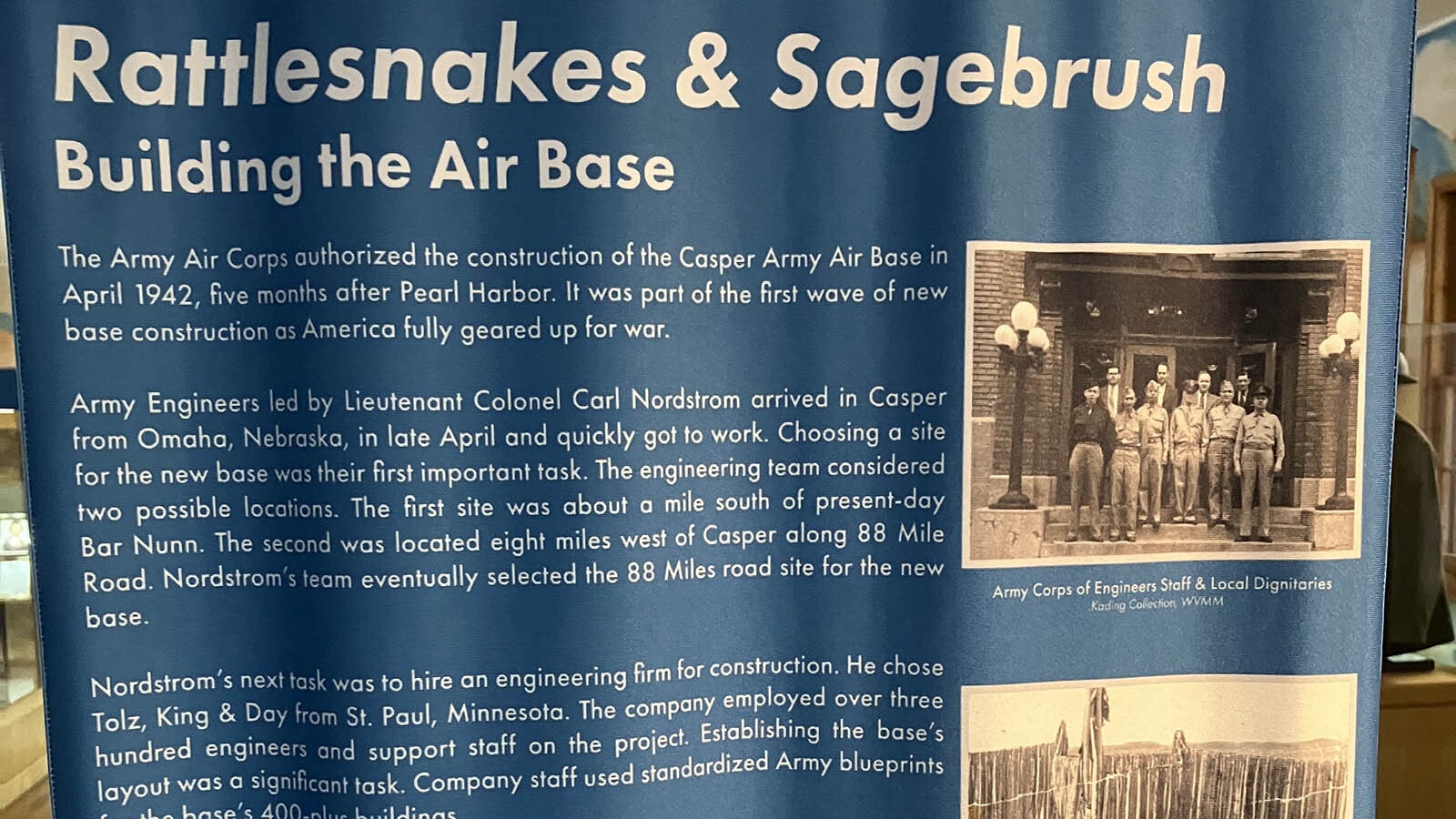The day Casper Army Air Base activated Sept. 1, 1942, the banner headline in the Casper Tribune-Herald read “Rommel Launches Offensive.”
The World War II German general nicknamed the “Desert Fox” had launched his North Africa campaign in an escalation of World War II.
But in Casper, the first of nearly 1,800 10-man bomber crews would soon be arriving to cycle through the base’s 10- to 12-week training. They were preparing to head for Europe, Africa and the Pacific in B-17s to challenge Rommel and other forces of German-Japan Axis.
Wyoming Veterans Memorial Museum Director John Woodward said the central Wyoming air base located where Casper/Natrona International Airport now sits was the last stop for World War II Army air crews headed overseas.
The base was built quickly that year to train the bomber crews for combat, and it became the training ground for a dominant part of America’s fight for freedom from the air. By the end of the war, an estimated 16,000 to 18,000 had trained there.
The Role
Plans developed by the Army Air Force called for the base to house an entire bombardment group that would typically house four squadrons of 18 heavy bombers in each squadron.
“Think of it as this is where the band got together,” Woodward said. “They had learned their instruments elsewhere, but this is where they were learning to work and fight as a team.”
Initially, the base operated as an operational training unit (OTU), and the 331st Bombardment Group trained pilots on B-17s and other members of the crew worked to keep their skills sharp. Crews would get assigned at the base and together would be sent overseas to fly as a team.
In early 1943, as the war progressed and air groups suffered heavy losses, the air base mission changed to being a replacement training unit (RTU). The base also transitioned to B-24 aircraft in April 1943. As an RTU, the needs overseas dictated whether the crews would stay together once deployed overseas or be assigned individually to existing crews that had lost men.
Bomber crews consisted of 10 that included the pilot, co-pilot, navigator, bombardier, flight engineer, radioman and gunners.
Creating the base was no easy task. As the summer of 1942 approached, the Army Corps of Engineers was given a budget of $10 million to get the base operational by Sept. 15, 1942. That figure in today’s dollars would be more than $191 million.
Infrastructure
In addition to runways and associated road infrastructure for the base, needs called for a railroad spur, warehouses, hangars, administration building, base chapel, barracks, dining hall and more.
With the need to build a base quickly, troops stationed there soon learned their barracks did not do well coping with the dust driven by Wyoming’s famous wind. The structures also didn’t optimally handle the snow and frigid temperatures of the winter.
“Soldiers regularly found thick layers of dust on their clothes, blankets and bunks,” a display at the museum relates. “Snow replaced dust during the rest of the year. … Some soldiers called the conditions ‘fighting the Battle of Casper.’”
Visitors to the Veteran’s Museum will learn that the base used specially trained civilian firefighters to deal with aircraft mishaps, and there were many. There were 90 crashes that occurred while the base was in operation.
“Those are major crashes that resulted in a fatality or near fatality,” Woodward said. “Smaller incidents that would have happened, like a crushed nose gear along the flight line or (an accident that) wasn’t significant, we do not have records of those. Just the ones that resulted in the loss of aircraft or the loss of life.”
Among the crashes was one in Mills and another on Casper Mountain.
In all, 140 men died in 90 crashes while training in Casper.
Female Mechanics
Members of the base fire department were not the only non-military personnel who worked on the base. A repair facility at the air base employed 800 civilians, mostly women, and they performed basic as well as more complex repairs to the aircraft, included replacing wings or tails.
As a training base, there also was a need for places where aircraft gunners and bombardiers could keep their skills sharp.
An air-to-ground gunnery range near the border of Fremont and Natrona counties gave crews about 55 square miles of space to send down painted ammunition that allowed trainers to help crews gain expertise.
The air base also had four bombing ranges that offered bombardiers big bullseyes for a target.
“Each practice bomb was a thin metal shell filled with sand and included a small explosive ‘flash’ charge in the nose,” according to a museum display. “Bombardiers relied on their specialized Norden Bombsights during training. These specialized, mechanical computers allowed crews to be very precise in dropping their bombs.”
Bob Hope Visit
Newspaper accounts show that after only a few months of operation, a special visitor arrived at the base. Comedian Bob Hope stepped out of a B-17 as part of a morale tour for troops stationed at the base.
An army air base newspaper called Slip Stream quoted Hope quipping about the B-17s: “It’s a Flying Fortress and that should be saying enough about that. They are as good as their reputation. I rode in every position on the plane and I like the ball turret best. It’s good for a hangover.”
As the war progressed, in March 1944, the 211th Army Air Force Base unit assumed command of the air base and training needs. The base’s last training class graduated Feb. 23, 1945.
Woodward said there are still an estimated 85 buildings from the time that remain standing in their original location. The museum building was once a club for enlisted men. All of the four hangars that once housed the heavy bombers still are in use at the airport.
“There are more (buildings from the base) that exist in Casper that were moved in the 1950s,” Woodward said. “And there are others that are scattered about central Wyoming that were sold to ranchers and farmers.”
Casper Army Air Base was officially deactivated March 7, 1945, just two months before Germany and its allies in Europe surrendered May 8, 1945. Personnel at the base were transferred to other military facilities. Victory over Japan would come Aug. 14, 1945.
“The county assumed operational control for the air base grounds in 1949,” Woodward said. “The base was officially deeded over in 1952, and before that was done the federal government did a sale and donation to different groups around Casper.”
Dale Killingbeck can be reached at dale@cowboystatedaily.com.

